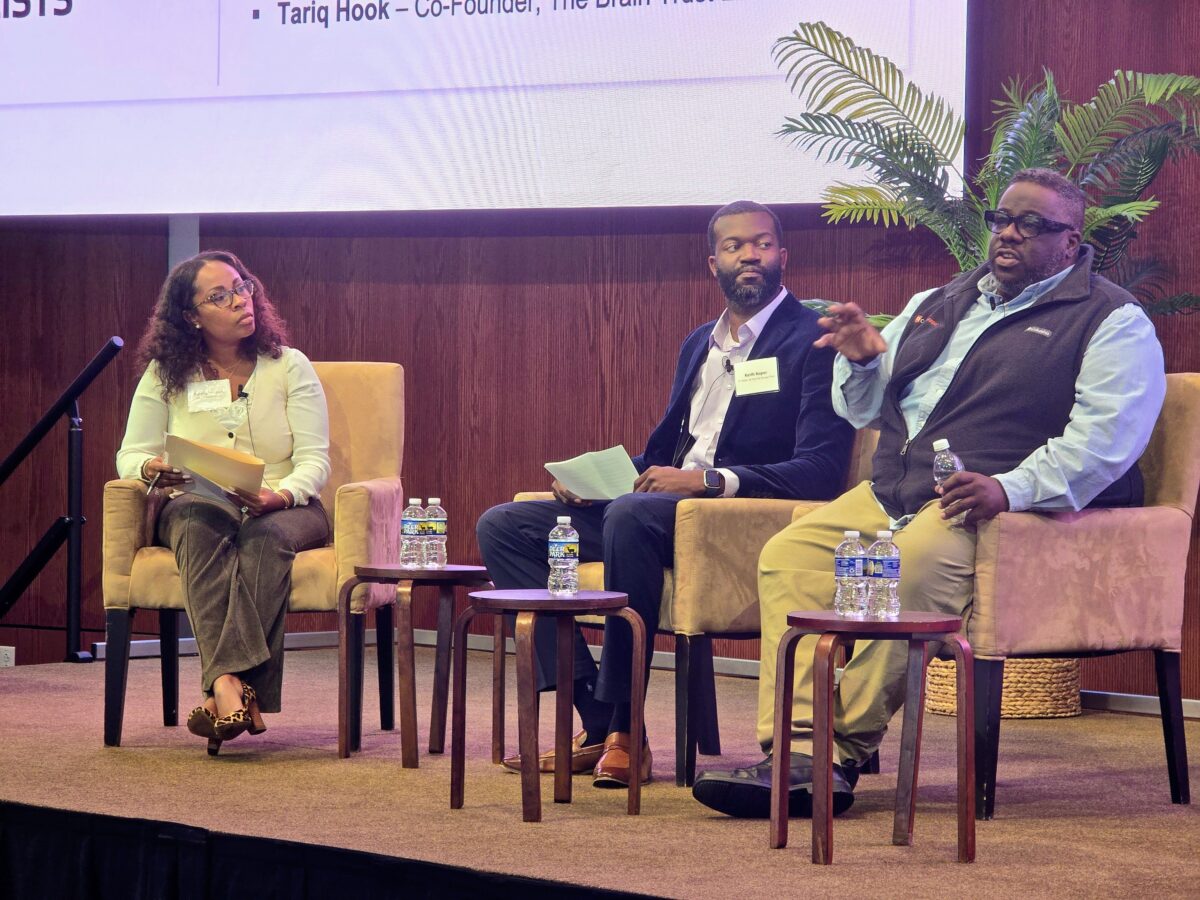The future is here — kind of.
That’s one of the takeaways from Delaware’s first Minority Enterprise Development Week event at the Audion on UD’s STAR Campus for talks and panels, including “Balancing AI with Human Interaction” with panelists Keith Roper, CEO of Tri-State 3D, and Tariq Hook, cofounder of the Brain Trust LLC and CIO of HXInnovations.
Here’s what businesses that are integrating AI into their workforce should know.
Heavy AI reliance can lead to expensive errors
AI is a work in progress, still in its trial and error stage, and some of those errors can be costly.
For example, at Air Canada, a ChatGPT customer service agent responded to a question about bereavement rates with an offer of a partial refund if a request was submitted within 90 days, according to Hook.
“The thing is, they didn’t have a bereavement policy,” Hook said. “[ChatGPT] had access to everything that was on the internet prior to 2020 and they looked at other [airlines’] bereavement policies, and it made one up.”
When Air Canada refused to honor the chatbot-created policy, the customer sued, and the company had to honor it.
AI won’t make you good at something you don’t do
People sometimes think of AI as something that does all the work, rendering humans useless.
That isn’t the right attitude when integrating AI into the workplace, Hook said.
“Think about Star Trek,” he said. “Everybody had a job, and everybody had access to artificial intelligence, but you didn’t see a doctor trying to be a farmer or a farmer trying to be a doctor.”
In other words, use AI to make what you do more efficient, not to try and be something you’re not.
ChatGPT can help you streamline your day
One of ChatGPT’s strengths is simplification, which makes it a good digital personal assistant, said Roper.
“When I wake up in the morning I’ll say [to ChatGPT], ‘Here are the things that I have to do today,’” he said. “‘Can you break those down for me from a personal assistant point of view?’ And it does.”
It can be as simple as pasting the day’s agenda into the chat box along with a prompt to streamline the day.
Most ChatGPT outputs aren’t your intellectual property
While AI policy and law are evolving, one thing to be aware of is that things created by generative AI are not legally the user’s intellectual property. So, for example, if ChatGPT creates a logo for a company, that org doesn’t really own it.
The only exception is if a user or company is using a private version of the tool where all of the information used to train is internal and owned by that user.
“I could take a model that was built and apply it only to my data, and then I own it because it was generated from my original intellectual property,” Hook said.
Disclose AI use to build trust with your audience
AI is controversial because it’s easy to exploit, the explosion of disinformation bots and fake photographs on social media, for example.
Business owners and executives should use AI only with full transparency to their customers and employees, including disclosing when AI is used and whether they collect data to train AI models
“AI should enhance our workflow and experience and not exploit,” Roper said. “We also have to keep in mind that we have to protect our customers at all times … Just making them aware will go a long way with them to create trust.”
Before you go...
Please consider supporting Technical.ly to keep our independent journalism strong. Unlike most business-focused media outlets, we don’t have a paywall. Instead, we count on your personal and organizational support.
Join our growing Slack community
Join 5,000 tech professionals and entrepreneurs in our community Slack today!






